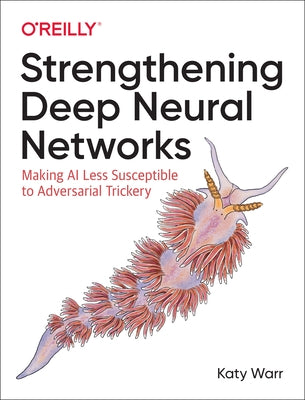Description
As deep neural networks (DNNs) become increasingly common in real-world applications, the potential to deliberately fool them with data that wouldn't trick a human presents a new attack vector. This practical book examines real-world scenarios where DNNs--the algorithms intrinsic to much of AI--are used daily to process image, audio, and video data.
Author Katy Warr considers attack motivations, the risks posed by this adversarial input, and methods for increasing AI robustness to these attacks. If you're a data scientist developing DNN algorithms, a security architect interested in how to make AI systems more resilient to attack, or someone fascinated by the differences between artificial and biological perception, this book is for you.
- Delve into DNNs and discover how they could be tricked by adversarial input
- Investigate methods used to generate adversarial input capable of fooling DNNs
- Explore real-world scenarios and model the adversarial threat
- Evaluate neural network robustness; learn methods to increase resilience of AI systems to adversarial data
- Examine some ways in which AI might become better at mimicking human perception in years to come
Author: Katy Warr
Publisher: O'Reilly Media
Published: 08/20/2019
Pages: 246
Binding Type: Paperback
Weight: 0.90lbs
Size: 9.10h x 7.00w x 0.50d
ISBN13: 9781492044956
ISBN10: 1492044954
BISAC Categories:
- Computers | Computer Science
- Computers | Artificial Intelligence | Computer Vision & Pattern Recognit
- Computers | Business & Productivity Software | Business Intelligence
About the Author
Katy Warr works at Roke Manor Research in the UK creating solutions for complex real-world problems. She specializes in AI and data analytics and leads the company's technical strategy in these areas. Previously she worked at IBM UK Laboratories, architecting and developing software for a variety of distributed enterprise products with an emphasis on transactional integrity and security.
Katy gained her degree in AI and Computer Science from the University of Edinburgh at a time when there was insufficient compute power and data available for deep learning to be much more than a theoretical pursuit. Fast forward a few years and she considers herself fortunate to witness this exciting field becoming mainstream.

